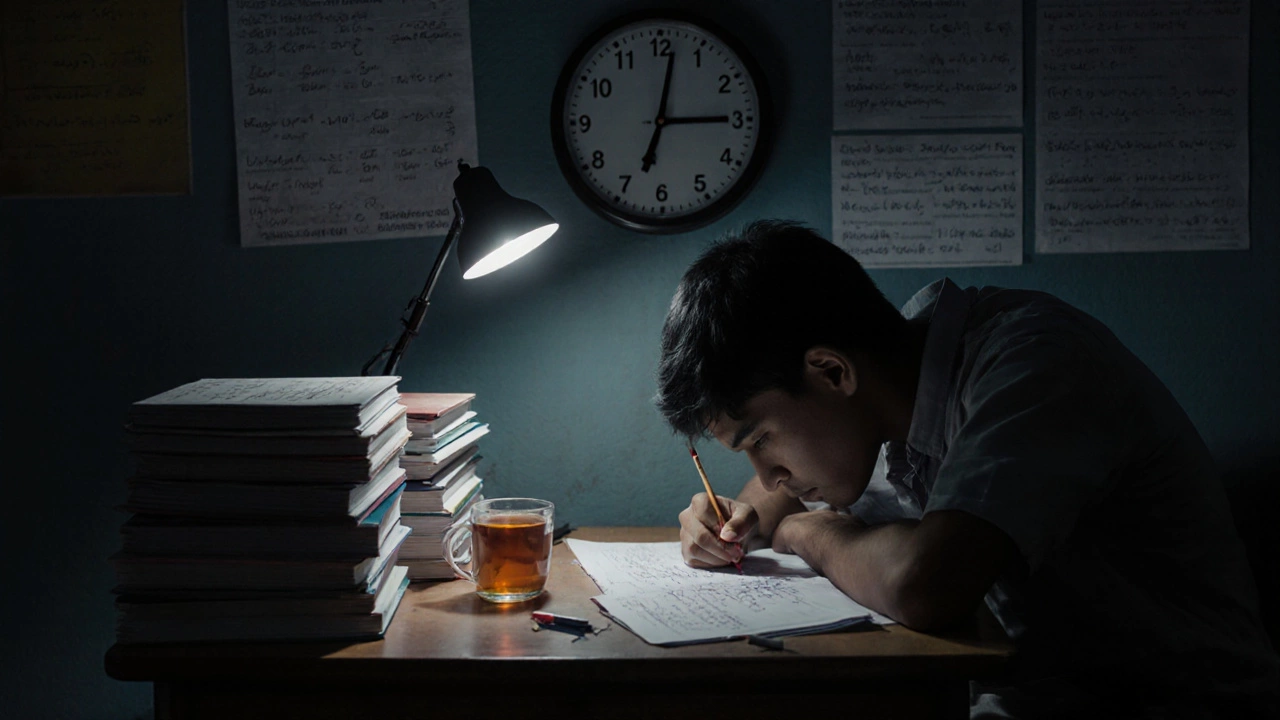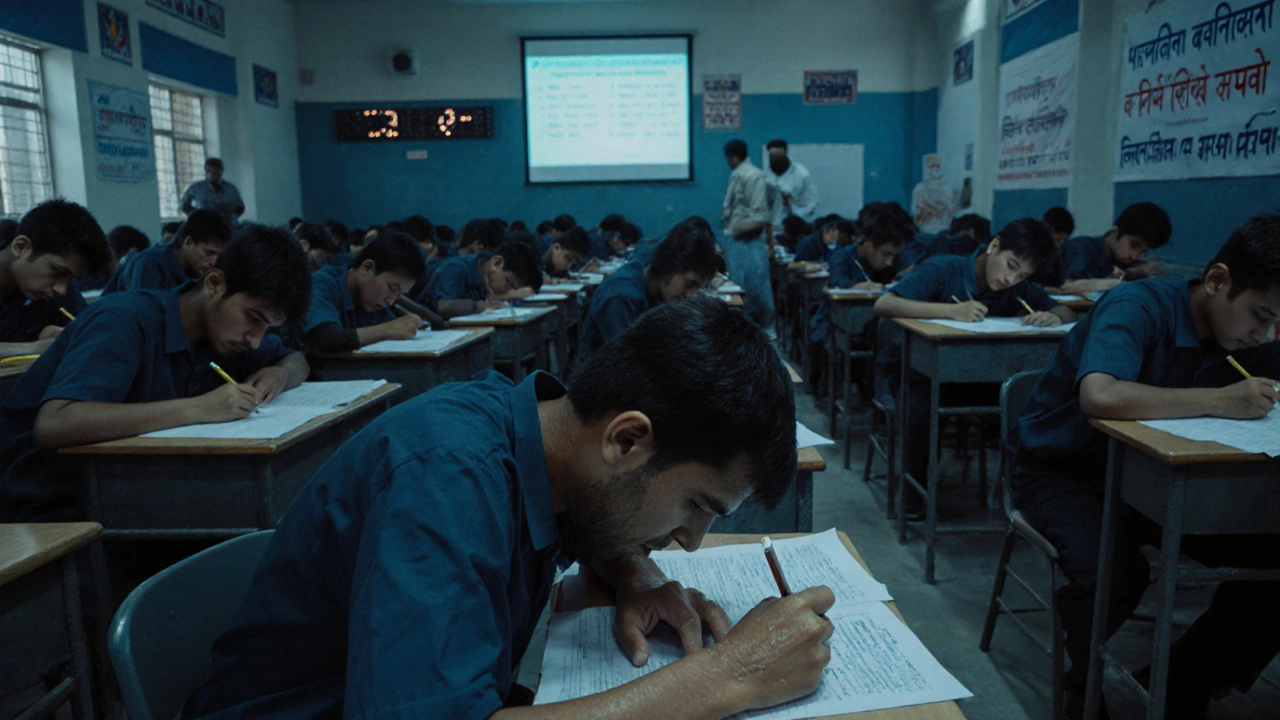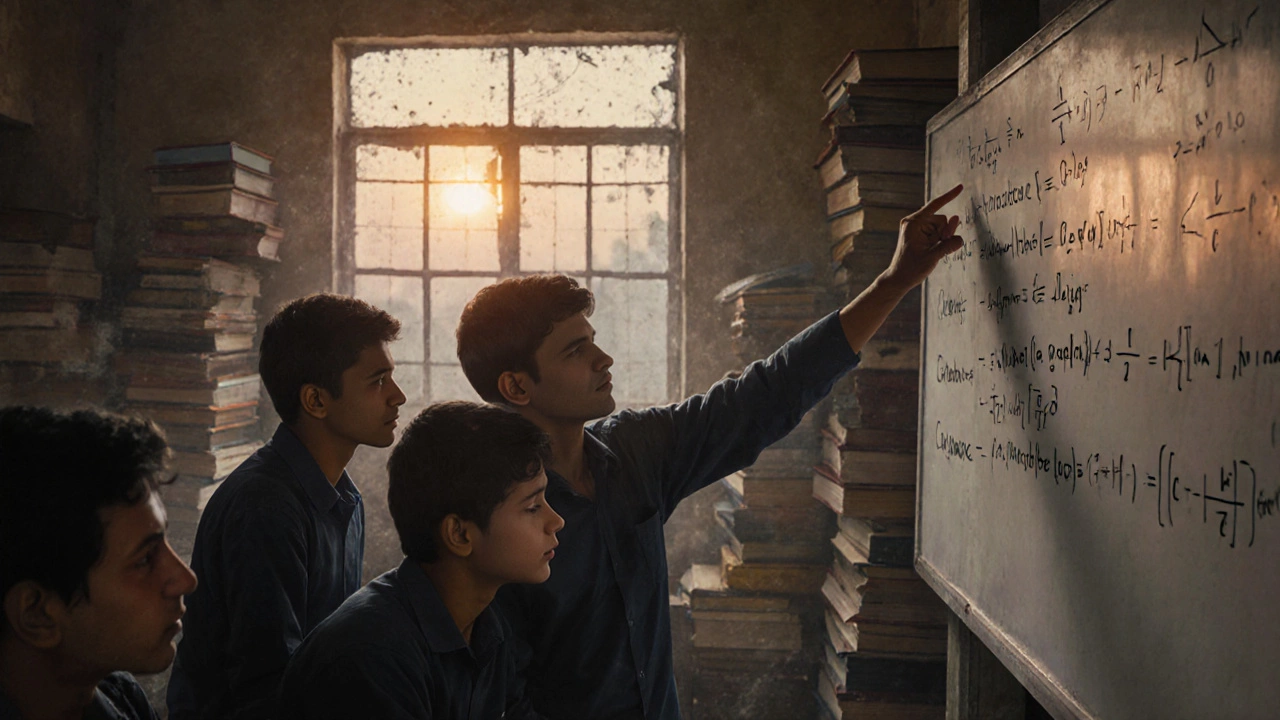Which Country Has the Hardest Math? Top Competitive Exams That Push Students to the Limit
Posted on Nov 18, 2025 by Elara Greenfield

When people ask which country has the hardest math, they’re not just curious about textbook difficulty. They’re really asking: Where do students face the most brutal, high-stakes math tests that decide their entire future? The answer isn’t about how complex the math is in classrooms-it’s about the pressure, the volume, the stakes, and the system that turns math into a life-or-death battle.
China’s Gaokao: Math as a National Crossroads
In China, the Gaokao isn’t just an exam. It’s a three-day marathon that determines whether a student gets into a top university-or ends up in a factory, a rural village, or a job with no upward mobility. The math section alone lasts 120 minutes and covers everything from calculus to advanced geometry, with problems designed to test not just knowledge, but speed, precision, and mental endurance.Students in provinces like Jiangsu and Zhejiang train for years. They wake up at 5 a.m., study until 11 p.m., and solve over 200 math problems a day in practice tests. The Gaokao math paper has 22 questions, but only the last two or three are truly hard. The rest? They’re designed to eliminate carelessness. One misplaced decimal, one skipped step, and you lose 5 points. In a system where 1 point can mean the difference between Tsinghua University and a community college, that’s catastrophic.
China’s math curriculum is also unusually advanced. By grade 10, students are solving systems of nonlinear equations and proving geometric theorems that American college freshmen struggle with. The Chinese government doesn’t just teach math-it weaponizes it as a sorting mechanism.
South Korea’s Suneung: Math Under the Microscope
South Korea’s College Scholastic Ability Test, or Suneung, is another beast. Held every November, it’s so intense the entire country shuts down. Planes are grounded, exams are delayed, even subway schedules are adjusted so no student is late.The math section is split into two parts: Type A for humanities students and Type B for science majors. Type B is where the real pain lives. It includes multivariable calculus, probability distributions, matrix transformations, and complex number theory-all in a 100-minute window. Students are expected to solve 30 questions, many with multi-layered logic chains. One question might ask you to derive a function’s minimum value using derivatives, then use that to calculate the area under a curve, then apply it to a real-world economic model-all in under 3 minutes.
What makes it worse? The scoring is percentile-based. Even if you get 90% right, if everyone else got 92%, you’re still in the bottom half. So it’s not about doing well-it’s about being the best. Tens of thousands of students enroll in private math academies called hagwons, where they spend 12+ hours a day drilling past papers. Some even sleep in the classrooms.
India’s IIT JEE: The Math Gauntlet
In India, the Joint Entrance Examination (JEE) Advanced is the gateway to the Indian Institutes of Technology. Over 250,000 students take the preliminary exam. Only 20,000 make it to the Advanced round. Of those, fewer than 10,000 get into an IIT.The math section is brutal. It doesn’t just test your ability to solve equations-it tests your creativity. Problems often combine concepts from algebra, trigonometry, and calculus into a single question. One 2023 question asked students to find the number of integer solutions to a system involving logarithms, quadratic inequalities, and modular arithmetic-all without a calculator.
Indian students don’t just memorize formulas. They master problem patterns. A single topic like ‘permutations and combinations’ can have 50+ distinct problem types. Students train with books like Problems in Mathematics by V. Govorov and Objective Mathematics by R.D. Sharma, which contain over 5,000 practice problems. The exam rewards not just accuracy, but the ability to spot shortcuts under extreme time pressure.
And the stakes? A top IIT graduate can earn 20 times the national average salary. That’s why families sell land, take loans, and sacrifice everything. Math here isn’t a subject-it’s a ladder out of poverty.

Other Contenders: Romania, Russia, and the IMO
Romania and Russia have long histories of producing world-class math Olympiad champions. Romania’s national math olympiad for high schoolers is so difficult that even university professors find some problems challenging. Russian math circles-after-school programs that focus on proof-based problem solving-have produced Fields Medalists since the 1960s.The International Mathematical Olympiad (IMO) is the ultimate test. Countries like China, South Korea, and the United States send their top 6 students. In 2024, China won first place with a perfect team score. The problems? They’re not found in any textbook. They require insight, elegance, and original thinking. One 2024 IMO problem asked students to prove a statement about cyclic quadrilaterals using only geometric transformations and symmetry-no coordinates, no trigonometry.
These countries don’t just teach math. They cultivate a culture where math is seen as art, as sport, as identity.
Why the U.S. and U.K. Don’t Make the List
You might wonder: Why isn’t the U.S. or U.K. on this list? Their math is advanced, right? Not in the same way.In the U.S., the SAT Math section has a maximum score of 800. The hardest problems are still within high school algebra and geometry. AP Calculus BC is considered the pinnacle-but even that’s designed to be passable with solid prep. The system rewards consistency, not genius.
In the U.K., A-Level Further Maths is tough, but it’s optional. Only about 5% of students take it. The exam structure allows time to think. There’s no penalty for slow, careful work. There’s no societal pressure to score in the top 0.1%.
The difference? In China, Korea, and India, math is a filter. In the West, it’s a tool.

What Makes Math ‘Hard’? It’s Not the Equations
The hardest math isn’t the most complex. It’s the math that:- Has zero room for error
- Is timed to the second
- Decides your entire future
- Is practiced for 5+ years, 8+ hours a day
- Is judged against thousands of equally prepared peers
That’s why the hardest math doesn’t live in a university lecture hall. It lives in a dimly lit study room at 2 a.m., with a half-empty cup of tea, a stack of past papers, and the silent fear that one mistake will change your life.
What’s the Real Winner?
If you’re asking which country has the hardest math, the answer isn’t just one place. It’s the system that turns math into a survival skill.China wins on scale and intensity. South Korea wins on precision and psychological pressure. India wins on problem-solving creativity under extreme constraints. Romania and Russia win on depth of theoretical training.
But the real winner? The students who survive it. They don’t just learn math. They learn discipline, resilience, and how to think under fire. That’s the hidden curriculum.
Is the Chinese Gaokao math harder than the IIT JEE?
Both are extremely difficult, but they test different things. The Gaokao math is more about speed and accuracy under pressure, with a high volume of standard problems. IIT JEE Advanced focuses on deep conceptual understanding and creative problem-solving-often combining multiple topics into one question. Many experts say JEE is more intellectually demanding, while Gaokao is more physically and mentally exhausting due to its length and stakes.
Do students in these countries actually enjoy math?
It varies. Many students don’t enjoy it-they’re driven by necessity. But a significant minority, especially those who excel, develop a genuine passion. In China and South Korea, top performers often join math clubs or compete in Olympiads for fun. In India, students who crack the JEE often say the thrill of solving a brutal problem is addictive. The system isn’t designed for enjoyment, but for excellence-and some thrive in that environment.
Can a student from the U.S. or Europe compete in these exams?
Technically, yes-but only if they’re enrolled in a school that follows the local curriculum. For example, international schools in China or India may prepare students for Gaokao or JEE. But without years of specialized training, it’s nearly impossible. The exams are designed for students who’ve been immersed in that system since elementary school. Even top American mathletes struggle with the pacing and cultural context of these tests.
Are these exams changing over time?
Yes. China has been reducing rote memorization in recent years, adding more open-ended questions. South Korea is trying to reduce student stress by making the Suneung slightly less intense. India’s JEE has started including more application-based questions. But the core structure remains: high stakes, high pressure, and math as the gatekeeper. Reform is slow because the system works-for those who win.
What’s the psychological cost of these exams?
The cost is severe. In China and South Korea, suicide rates spike around exam season. Depression, anxiety, and burnout are common. Many students report feeling like their worth is tied to their math score. Some countries are trying to address this with counseling programs, but the culture of competition runs deep. It’s a system that produces elite engineers and scientists-but at a heavy human toll.